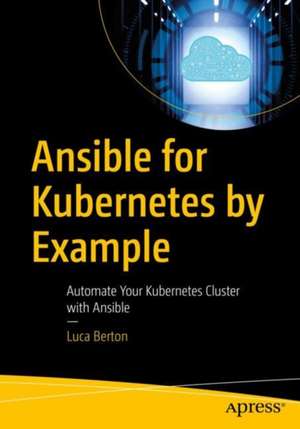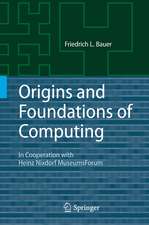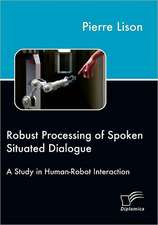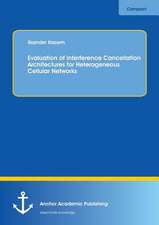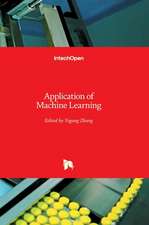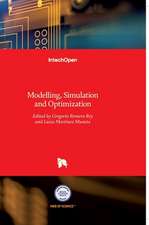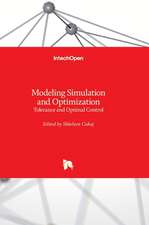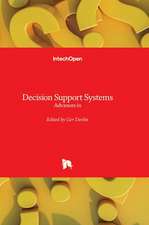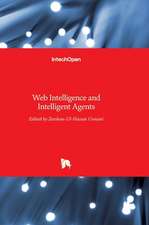Ansible for Kubernetes by Example: Automate Your Kubernetes Cluster with Ansible
Autor Luca Bertonen Limba Engleză Paperback – 11 mai 2023
Learn how to automate your Kubernetes infrastructure using Ansible. This book will enable you to automate more tasks and save time with this human-readable platform.
Containerized microservices deployed via Kubernetes allows you to save time, reduce human interaction and errors, and create applications that are more robust. You’ll learn how to automate the most redundant activities such as reports, services, the launch of a pod, adding permanent storage, configuring load balancing, and adding or modifying any Kubernetes parameter. You'll also gain an understanding of end-to-end use cases and how advanced cluster automation, such as Helm packages and node states, are evolving.
Each lesson utilizes a specific use-case for the modern Kubernetes cluster and focuses on a single module from the most crucial parameter, complete with code demonstrations. Each code example is battle-proven in real-life with console interaction and verification.
Containerized microservices deployed via Kubernetes allows you to save time, reduce human interaction and errors, and create applications that are more robust. You’ll learn how to automate the most redundant activities such as reports, services, the launch of a pod, adding permanent storage, configuring load balancing, and adding or modifying any Kubernetes parameter. You'll also gain an understanding of end-to-end use cases and how advanced cluster automation, such as Helm packages and node states, are evolving.
Each lesson utilizes a specific use-case for the modern Kubernetes cluster and focuses on a single module from the most crucial parameter, complete with code demonstrations. Each code example is battle-proven in real-life with console interaction and verification.
What You'll Learn
- Automate Kubernetes cluster management, cloud services, pods, and storage with Ansible
- Configure your Ansible controller node
- Write and execute Ansible Playbook code that follows best practices
- Augment your productivity by applying Infrastructure as Code (IaC)
- Troubleshoot Ansible
IT professionals who would like a jargon-free understanding of Ansible technology, Windows Systems Administrators, DevOps professionals, thought leaders, and infrastructure-as-code enthusiasts.
Preț: 305.97 lei
Preț vechi: 382.46 lei
-20% Nou
Puncte Express: 459
Preț estimativ în valută:
58.55€ • 61.41$ • 48.74£
58.55€ • 61.41$ • 48.74£
Carte disponibilă
Livrare economică 11-25 martie
Preluare comenzi: 021 569.72.76
Specificații
ISBN-13: 9781484292846
ISBN-10: 1484292847
Ilustrații: XXII, 286 p. 59 illus.
Dimensiuni: 178 x 254 mm
Greutate: 0.54 kg
Ediția:First Edition
Editura: Apress
Colecția Apress
Locul publicării:Berkeley, CA, United States
ISBN-10: 1484292847
Ilustrații: XXII, 286 p. 59 illus.
Dimensiuni: 178 x 254 mm
Greutate: 0.54 kg
Ediția:First Edition
Editura: Apress
Colecția Apress
Locul publicării:Berkeley, CA, United States
Cuprins
Chapter 1: Modern IT Infrastructure and Hello App.- Chapter 2: Ansible Language Code.- Chapter 3: Ansible For Containers.- Chapter 4: Ansible For K8s Tasks.- Chapter 5: Ansible For Data Plane.- Chapter 6:Ansible For Control Plane.- Chapter 7: Ansible For K8s Cloud Providers.
Notă biografică
Luca Berton is an Ansible Automation Expert who has been working with Red Hat Ansible Engineer Team for three years. With more than 15 years of experience as a System Administrator, he has strong expertise in Infrastructure hardening and automation. Enthusiast of the Open Source supports the community by sharing his knowledge in different public access events. Geek by nature, Linux by choice, Fedora, of course.
Textul de pe ultima copertă
Learn how to automate your Kubernetes infrastructure using Ansible. This book will enable you to automate more tasks and save time with this human-readable platform.
Containerized microservices deployed via Kubernetes allows you to save time, reduce human interaction and errors, and create applications that are more robust. You’ll learn how to automate the most redundant activities such as reports, services, the launch of a pod, adding permanent storage, configuring load balancing, and adding or modifying any Kubernetes parameter. You'll also gain an understanding of end-to-end use cases and how advanced cluster automation, such as Helm packages and node states, are evolving.
Each lesson utilizes a specific use-case for the modern Kubernetes cluster and focuses on a single module from the most crucial parameter, complete with code demonstrations. Each code example is battle-proven in real-life with console interaction and verification.
Containerized microservices deployed via Kubernetes allows you to save time, reduce human interaction and errors, and create applications that are more robust. You’ll learn how to automate the most redundant activities such as reports, services, the launch of a pod, adding permanent storage, configuring load balancing, and adding or modifying any Kubernetes parameter. You'll also gain an understanding of end-to-end use cases and how advanced cluster automation, such as Helm packages and node states, are evolving.
Each lesson utilizes a specific use-case for the modern Kubernetes cluster and focuses on a single module from the most crucial parameter, complete with code demonstrations. Each code example is battle-proven in real-life with console interaction and verification.
You will:
- Automate Kubernetes cluster management, cloud services, pods, and storage with Ansible
- Configure your Ansible controller node
- Write and execute Ansible Playbook code that follows best practices
- Augment your productivity by applying Infrastructure as Code (IaC)
- Troubleshoot Ansible
Caracteristici
How to execute commands with Ansible (Playbook) on target nodes Examples of how to interact with Kubernetes Infrastructure for any industry How to tackle the most common fatal error code: reproduce, troubleshoot, and fix
